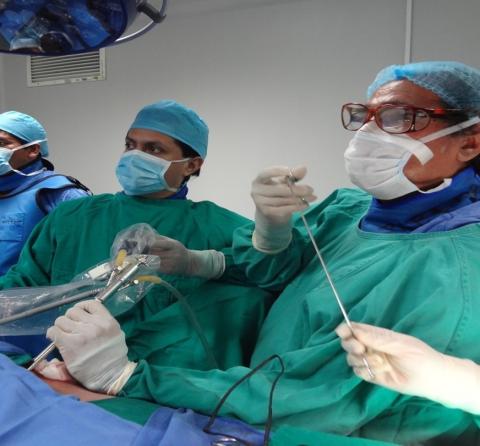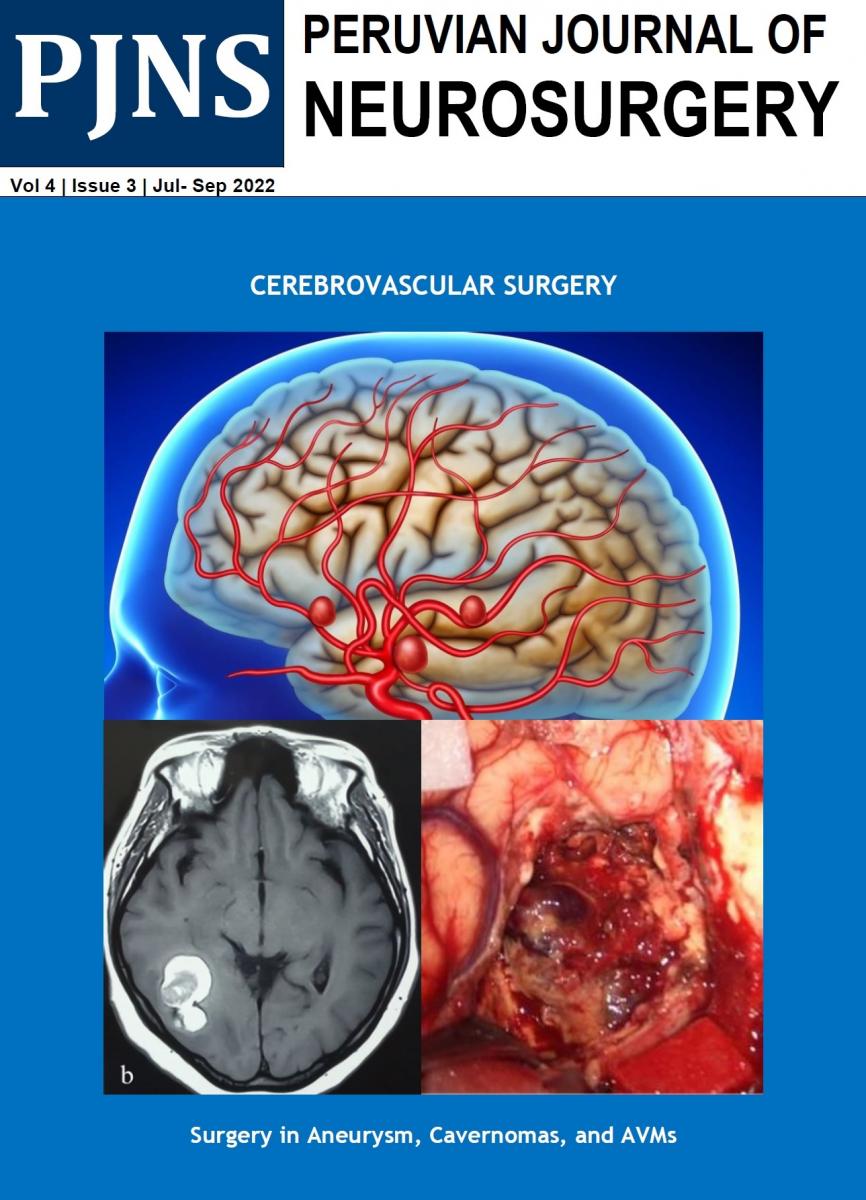Usted está aquí
Peruvian Journal of Neurosurgery
Beginnings of endoscopy spine surgery in Peru
JERSON FLORES C.
Abstract (Spanish) ||
Full Text ||
PDF (Spanish)
ABSTRACT
|
In recent years, spinal endoscopy has become increasingly common in our setting; however, its use is not recent. The first reported cases date back to the early 2010s by a team from the Cayetano Heredia Hospital in charge of Drs. Wesley Alaba and Jerson Flores. Although other minimally invasive procedures such as nucleoplasty, nucleolysis, or percutaneous rhizotomies had already been used since the 2000s, it was not until 2011 that endoscopy was used for the first time in a standardized manner in spinal surgery with the endoscope as the only element of vision, successfully resecting a vertebral lesion.
The first cases of vertebral pathology in which endoscopic surgery was used were the resection of a synovial cyst and a tuberculous abscess, followed by the resection of herniated discs at the L5-S1 level and later at the L3-L4 and L4-L5 levels. The first approach was the tubular interlaminar posterior approach, followed by the transforaminal endoscopic approach and the percutaneous posterior interlaminar approach. In the following years, endoscopy has been used not only in resecting herniated discs but also in treating central and lateral canal stenosis, reaching significant experience in this technique.
The development of spinal endoscopy and its increasingly widespread use by neurosurgeons and traumatologists from different hospitals in the country represents an important advance in spinal surgery in Peru, which brings greater benefit to patients.
Keywords: Endoscopy, Intervertebral Disc Displacement, Endoscopes, Neurosurgeons (source: MeSH NLM)
|



